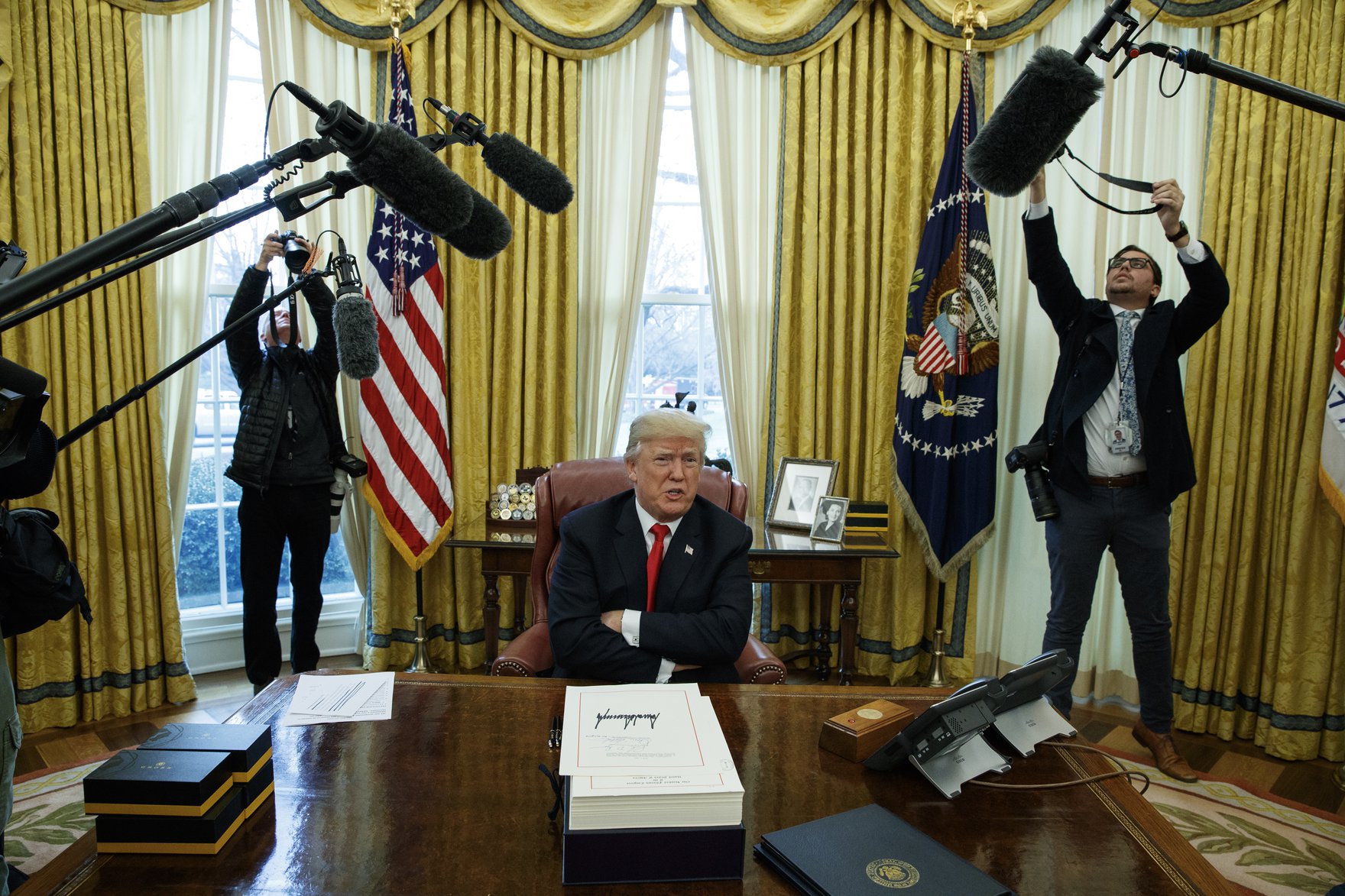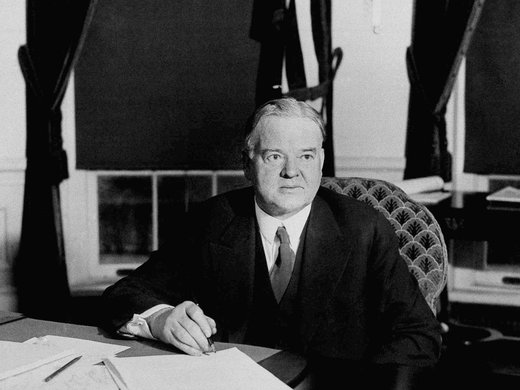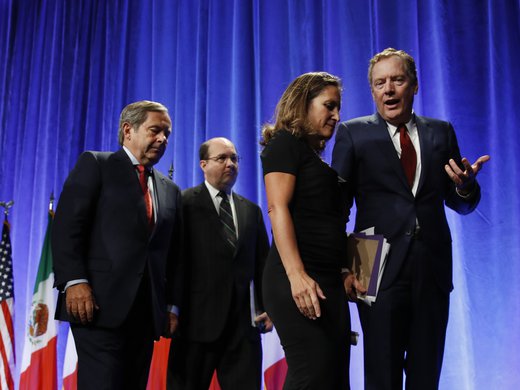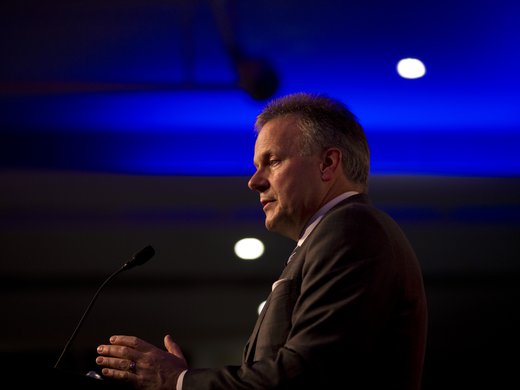President Donald Trump and his administration created a wake of disruption during his first year in office. At the domestic level, this included efforts to undermine the media and the administration of justice — basic institutions of an effective, functioning democracy. The result is a society more divided today than it was a year ago. At the international level, the shambolic approach to governance adopted by the administration has eroded confidence in the United States’ role as the de facto leader of democratic countries in international security and human rights. And, for the global community, the disruption engendered by President Trump threatens international arrangements that, for the past 70 years, have made the global economy a wellspring of economic prosperity and social development.
It is too early to say if the administration’s international policies will have long-lasting effects. Nevertheless, it is possible to identify three trends that warrant close monitoring at the onset of 2018.
1. Disruption of International Trade (and the Institutions That Govern It)
The United States president and his advisers have made it clear that they consider the status quo in trade to be stacked against them. This includes bilateral and plurilateral arrangements, such as the North American Free Trade Agreement (NAFTA), which the administration is eager to renegotiate, and the Trans-Pacific Partnership (TPP), which Trump withdrew the United States from just days after his inauguration.
The Trump administration’s ire is not limited to bilateral agreements; multilateral trading arrangements are under fire too. The focus here seems to be the dispute settlement process that offers members of the World Trade Organization (WTO) recourse in the event that another member violates trade rules. If the Unites States administration can weaken such multilateral institutions, they could peel away the individual countries party to bilateral arrangements in which the United States has a negotiating advantage. In the WTO’s absence, smaller countries are subject to the law of the jungle, rather than the rule of law.
First, Trump’s disruptive approach to trade may accelerate following passage of the Republican tax package. Bipartisan analysis indicates that one effect of the tax cuts is to increase fiscal deficits. If, in addition, the tax cuts also increase investment spending, trade deficits would likely rise. This is simple macroeconomic national income accounting. But from the administration’s new-mercantilist perspective, those deficits would be more evidence that the international trade rules are rigged against the United States. In fact, those deficits would be the counterpart of short-term appreciation of the dollar that would accompany additional domestic demand in an economy that is already at, or very close to, full employment. In this situation, US interest rates are likely to increase more than would otherwise be the case, pushing up the dollar against other currencies.
Over a longer time horizon, the dollar could be expected to depreciate to service the increased net foreign debt. In the short term, however, the combination of a higher dollar and larger trade deficits is almost certain to result in the Trump administration charging other countries — specifically those whom the United States has trade deficits against — with an accusation of currency manipulation.
Watch, therefore, for the United States Trade Representative to try to get currency manipulation clauses inserted in trade arrangements.
Such clauses are problematic from the perspective of the international trading system. Most worrying is the danger of overt political interference in or manipulation of assessments of exchange rates. Exchange rates embody a complex web of factors and regardless of the prowess of negotiators or legal drafters, incorporating that complexity in trade agreements would require considerable discretion regarding the interpretation and enforcement of such clauses. Again, this is a game that puts smaller countries at the mercy of larger players and leads to another trend to follow in 2018.
2. Governance Challenges for the International Monetary Fund
Power imbalance between small and large economic players is the reason why the International Monetary Fund (IMF) was established to adjudicate exchange rate disputes. Under the IMF’s articles of agreement, member countries specifically eschew efforts to manipulate exchange rates to gain a competitive trade advantage. The idea behind that clause is that countries benefiting from multilateral tariff reductions should not be able to provide effective protection through competitive exchange rate devaluations. Members therefore agreed to give the IMF oversight of exchange rates to facilitate a mutually beneficial process of trade liberalization.
But for the IMF’s injunctions on exchange rates and the policy frameworks underlying them to be effective, the Fund must be viewed as legitimate and representative.
This isn’t necessarily the case: IMF quotas, which constitute the basic governance structure of the Fund, largely reflect the global economy of the mid-twentieth century, in which North America and Europe dominated the global economy, not the global economy of the early twenty-first century. Large emerging market economies, such as China, Brazil and India, that have grown significantly and now account for a greater share of the global economy, demand larger quota shares and board representation, and thus influence over the IMF.
Our first two trends to watch are closely linked; if the Trump administration is serious about wanting to prevent exchange rate manipulation, it will push for meaningful IMF quota reforms so that large emerging market economies have a stake in the institution and its role in promoting the orderly operation of the global economy. In this respect, 2018 will likely be a critical year for quota reform, which has been postponed for successive review periods. Given the complexity of negotiations, which must balance myriad economic and political considerations, the longer that meaningful efforts are delayed, the less likely that the issue will be resolved before the expiration of the current review period at the end of 2019.
The danger, however, is that the Trump administration isn’t interested in strengthening the IMF any more than it wants to see stronger multilateral trading arrangements. If the Fund doesn’t assess exchange rates based on its technical economic indicators, there will be fewer constraints on the administration’s use of its own tests of manipulation to brand trading partners as currency manipulators, opening the door to punitive trade actions under Washington’s discretion.
The failure of quota reform could seriously weaken the IMF at a time of heightened risks in the global economy.
3. A Spike in Economic Risk
This increase in risk is the third trend to watch heading into a seemingly uncertain new year. Such risk may reflect the possibility of financial instability and debt problems. Both effects could be augmented by the tax cuts recently passed by the Republican-controlled Congress. This is because an appreciation of the US dollar and higher interest rates, if realized, would increase the domestic currency debt-servicing burden for anyone that borrowed in US dollars to take advantage of historically low interest rates. To some extent, this effect could be offset by higher domestic currency earnings on sales or exports denominated in dollars. But these hedges are unlikely shared by all. Those at greatest risk have large US dollar debts and low dollar sales or exports.
Larger US trade deficits would also entail a higher risk of financial instability. While tax cuts could conceivably stimulate a wave of productive investments in new plants, equipment and technologies, this felicitous outcome isn’t assured. It is possible that a new round of speculative practices and instruments could be resurrected, reminiscent of the period leading to the global financial crisis. Such instruments, which were intended to better manage and allocate risk, ultimately had the opposite effect. They also reflected the need to finance larger trade deficits.
While stronger prudential regulation put in place after the global financial crisis should limit the extent to which such practices once again become widespread, the Trump administration’s efforts to ease regulatory constraints could provide a fertile ground. Here, again, the administration’s disruptive approach to governing could have serious consequences for the global economy. The combination of highly integrated global financial markets and inconsistent international regulation creates incentives for regulatory arbitrage as financial firms seek to minimize regulatory costs.
Combining all three trends — disruption to international trade, governance challenges at the IMF and a spike in economic risk — will almost certainly result in serious consequences for the global economy. And of course, the Trump administration is a common thread in this tripartite recipe for disaster. The United States approach to policy could threaten the unique role of the US dollar in the global financial system, which would have profound implications for the United States and its ability to project power, but that’s a preview for a different — and perhaps even darker — new year.



